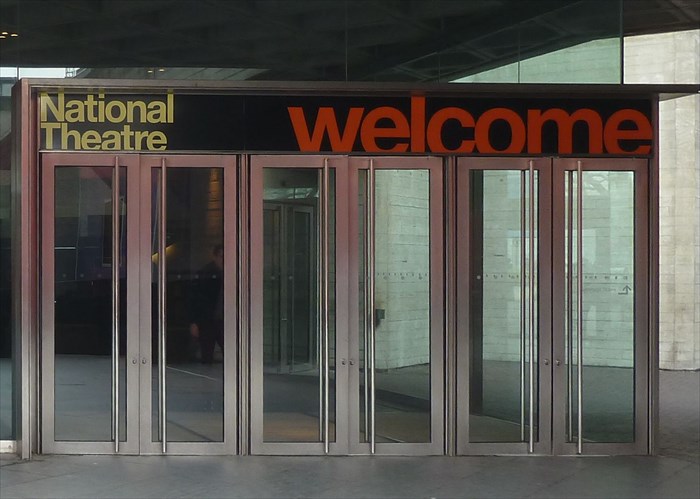
Among the many great theatres in London, from the Globe to the West End, stands this center for dramatic arts on the South Bank. It is actually a network of three stages, each with its own unique perspective for varying productions. The back stage area and supporting areas are unequalled, allowing for the most lavish and intricate productions, often presented in repertory.
There are always performances here, but the National Theatre is also a popular tourist destination for its extensive backstage tours.
From the official tourism site Visit London:
"The National Theatre has three auditoriums under one roof, the Olivier, Lyttelton and Cottesloe. It has a reputation for producing theatre of the highest standards and presents an unrivalled range of classics and new plays, plus entertainment for all the family. The theatre also offers a selection of bars and restaurants, a bookshop, free foyer exhibitions and live music, backstage tours, platform performances, riverside terraces, and parking."

From the Wikipedia entry for the Royal National Theatre
From its foundation in 1963 until 1976, the company was based at the Old Vic theatre in Waterloo. The current building was designed by architects Sir Denys Lasdun and Peter Softley and structural engineers Flint & Neill and contains three stages, which opened individually between 1976 and 1977. It is located next to the Thames in the South Bank area of central London.
Since 1988, the theatre has been permitted to call itself the Royal National Theatre, but the full title is rarely used. The theatre presents a varied programme, including Shakespeare and other international classic drama; and new plays by contemporary playwrights. Each auditorium in the theatre can run up to three shows in repertoire, thus further widening the number of plays which can be put on during any one season.
The National Theatre building houses three separate auditoria, with a temporary structure added for a year from April 2013:
The Olivier Theatre (named after the theatre's first artistic director, Laurence Olivier), is the main auditorium, and was modelled on the ancient Greek theatre at Epidaurus; it has an open stage and a fan-shaped audience seating area for 1,160 people. An ingenious 'drum revolve' (a five-storey revolving stage section) extends eight metres beneath the stage and is operated by a single staff member. The drum has two rim revolves and two platforms, each of which can carry ten tonnes, facilitating dramatic and fluid scenery changes. Its design ensures that the audience's view is not blocked from any seat, and that the audience is fully visible to actors from the stage's centre. Designed in the 1970s and a prototype of current technology, the drum revolve and a multiple 'sky hook' flying system were initially very controversial and required ten years to commission, but seem to have fulfilled the objective of functionality with high productivity.
The Lyttelton Theatre (named after Oliver Lyttelton, the National Theatre's first board chairman) has a proscenium-arch design and can accommodate an audience of 890.
The Cottesloe Theatre (named after Lord Cottesloe, chairman of the South Bank Theatre board) is a small, adaptable studio space, designed by Iain Mackintosh, holding up to 400 people depending on the seating configuration. As part of the National's NT Future redevelopment, the Cottesloe was closed for refurbishment in February 2013 and is planned to reopen in spring 2014. On reopening it will be renamed the Dorfman Theatre (after Lloyd Dorfman, philanthropist and chairman of Travelex Group).
The Shed , a 225-seat temporary performance space at the front of the building was opened in April 2013. The distinctive 'red wooden box' structure, designed by architects Haworth Tompkins, will be open for a year to maintain capacity whilst the Cottesloe/Dorfman Theatre is out of action.